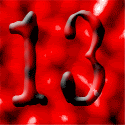In its own wide bay underneath the limestone bulk of Monte Pellegrino, and fronting the broad, fertile Conca d'Oro (Golden Shell) Valley, PALERMO is stupendously sited. Originally a Phoenician, then a Carthaginian colony, this remarkable city was long considered a prize worth capturing. Named Panormus (All Harbour), its mercantile attractions were obvious, and under Saracen and Norman rule in the ninth to twelfth centuries Palermo became the greatest city in Europe – famed for the wealth of its court, and peerless as a centre of learning. There are plenty of relics from this era, but it's the rebuilding of the sixteenth and seventeenth centuries that shaped the city as you see it today.
It's worth making Palermo your first stop in Sicily; it's the island's main transport centre, and has Sicily's greatest concentration of sights. Money from Rome and the EU has facilitated the regeneration of the historic centre – the signs are obvious – but the obstacles remain huge. This is partly owing to the age-old system of kickbacks for contracts and tenders to bent politicians and the Mafia, which have creamed off much of the money. One of the few to stand up against this state of affairs was Leoluca Orlando, who, following his deposition by his own Christian Democrat party in 1990, went on to found and lead the anti-Mafia and anti-Masonic party, La Rete. As Palermo's mayor (1993–2001), his prominence on the national stage forced attention on reform of the city's institutions and reversed the tendency of neglect and decay that had characterized the city for centuries.
The essential sights are all pretty central and easy to cover on foot. Paramount are the hybrid Cattedrale and nearby Palazzo dei Normanni (Royal Palace), with its superb, mosaic-decorated chapel, the Cappella Palatina; the glorious Norman churches of La Martorana and San Giovanni degli Eremeti; the Baroque opulence of San Giuseppe dei Teatini and Santa Caterina; and first-class museums of art, archeology and ethnography.
This historical jumble of treasures has its downside. Many people have continued to live in their medieval ghettos, unemployment is endemic, the old port largely idle and petty crime commonplace. Don't be paranoid, though: things are not significantly worse than any other European city. By taking the usual precautions, not flashing bulging wallets or cameras around and avoiding any quiet neighbourhood, especially at night, you should feel perfectly safe.
==From : Travel.yahoo.com==
































nice place to go.
ReplyDelete